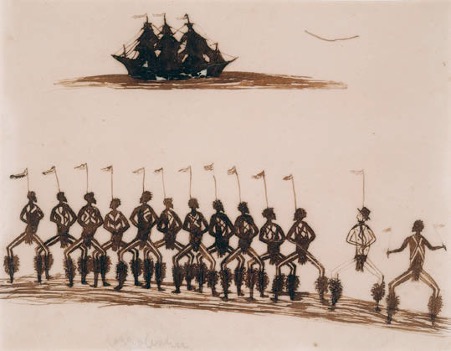
The January 2008 CIHA international conference in Melbourne was a major event for Australia. The theme of the conference was Crossing Cultures: Conflict, Migration and Convergence. Outgoing President of CIHA Professor Ruth Phillips (Canada Research Chair in Modern Culture and Professor of Art History, Carleton University, Canada) together with the conference organising team headed by Australia's Professor Jaynie Anderson (Herald Chair of Fine Arts, University of Melbourne, Australia), opened the conference to delegates from countries not usually represented in large numbers at international art history conferences and particularly encouraged participation from Asia, South America and the Pacific. Much of the discussion at the conference related to the issue of 'global' art and new directions for art scholarship in a changing world. Professor Howard Morphy (Director, Research School of Humanities, Australian National University) noted at the final plenary the need for definitions of art to continue to be broadened across cultures, borders and time, a call echoed by Jonathan Mane-Wheoki (Museum of New Zealand/Te Papa Tongarewa). Clearly in such a huge conference tough choices had to be made as to which sessions could be attended but delegates agreed that the standard of papers was extremely high across all sessions. Indigenous art was foregrounded in many sessions as was appropriate for a conference based in Australia and there was an extremely important session devoted to the idea of Indigeneity/Aboriginality.
The need to avoid narrow definitions of art confined by Western definitions was echoed in the titles of many sessions and by many speakers. The same theme was the focus of the magnificent keynote addresses by Homi Bhabha and Neil Macgregor, the latter focussing on the British Museum's efforts to extend the role of the Museum and redefine its social and civic purpose. The idea of world art history and new approaches to the concept of 'modern' and 'contemporary' art provided significant contributions to the aim of developing new definitions of global art. The sessions I attended on this theme were those chaired by Terry Smith and Charles Green on contemporaneity in art, by Andrea Giunta and Anthony White on the idea of the modern, with emphasis on Latin America, and by John Clark and Toshiharu Omuka on Asia. All were particularly strong in relation to the concept of global art in the modern world. On the fascinating topic of ideas that crossed cultures in world art before the twentieth century the session on nature across cultures chaired by Jackie Menzies, Hidemichi Tanaka and Partha Mitter offered especially illuminating insights.
There were plenty of pluses at this conference, including the extensive involvement of the National Gallery of Victoria and other art institutions in Melbourne and the excellent postgraduate student involvement. Perhaps the most significant minus was that the plethora of parallel sessions limited opportunity for extended conversations, but that is perhaps unavoidable with such a large international conference. I would have personally preferred more plenary sessions where there could have been more general discussion and audience participation and where themes could have been drawn together, and in particular more discussion of the overriding theme of a 'new' global art history, and it would have been a good addition to have a speaker located in Asia among the keynotes at the plenary sessions. However, the papers are being published and the conversations begun at the conference will continue. And as Professor Anderson noted, there was very significant public interest in the conference: for example, as she told the audience at the final plenary, more people had attended the open session at the Melbourne Town Hall on Monday 14 January than had come to hear Al Gore on climate change.












